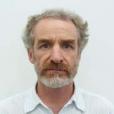
Showing 441 - 460 of 655 results
Eureka! ANSTO recognised at the Oscars of science
Fish lift
A lift for fish at Tallowa Dam: Study on dietary impacts.
US patent awarded for unique Australian mining technology
Lithium Australia, a company that has a close association with ANSTO’s business unit Minerals, has been awarded a US patent for its unique lithium mining technology SiLeach®.
Radon - the new pollution watchdog
Atmospheric scientists have developed a new technique to measures the naturally-occurring radioactive gas radon for use in accurately categorising the degree of atmospheric mixing.
Creating a Feather Map to track waterbirds and inform water resource management
Strategic research partnership agreement with University of Queensland

Role at ANSTO
Radiocarbon dating and stable isotope analysis contribute to Antarctic research
Study shows for the first time that vegetation in the Windmill Islands, East Antarctica is changing rapidly in response to a drying climate.
Scholarship applications open
Applications are now being accepted for the Industry foundations Scholarship.
Shorebirds Competition 2020
A lesson in Science and Sustainability.
ANSTO environmental scientists highlight need to monitor legacy nuclear fallout in Antarctica
ANSTO environmental scientists have alerted the scientific community of the critical need to monitor changes to ice containing potential nuclear fallout that reached Antarctica from 20th century atmospheric weapons testing.
Advanced materials research in microgravity earns NASA recognition
A pioneering study led by Professor Junpei Yamanaka of Nagoya City University and an international team that included ANSTO has delivered transformative insights into the behaviour of colloidal particles under microgravity.

Development of radioisotopes
Research and development activity explores new, boutique radioisotopes, including positron, gamma and beta/gamma emitter. The aim is to provide material for the next generation of diagnostic and therapeutic radiopharmaceuticals
Innovative radioactive waste treatment technology forging ahead
International interest is building in Australia’s new multi-million-dollar radioactive waste processing facility at the Sydney campus of the Australian Nuclear Science and Technology Organisation (ANSTO).
Australia amongst the world's best in the international nuclear arena
On the international stage amongst the leading nuclear nations of the world, Australians hold its own. This status has been earned by ANSTO’s seventy-year history of safe nuclear operations, the application of nuclear science and technology to benefit society and nuclear stewardship role in Australia.

Services - Platypus
Sample environments, Data Analysis.
3D cell printing technology earns ANSTO Eureka Prize for Technology
Researchers and industry partners from UNSW Australia, the Australian Centre for Nanomedicine, Children’s Cancer Institute and Inventia Life Sciences Pty Ltd have been awarded the 2021 ANSTO Eureka Prize for Innovative Use of Technology for their method to rapidly-produce 3D cell structures

Ion beam analysis techniques
When an energetic ion beam hits a sample it will interact with the atoms through a number of very complex interactions. By detecting and measuring the reaction products resulting from the various interactions and their intensities, you can obtain quantitative data on the sample's constituent elements and their spatial distribution.
ANSTO recognises scientific achievement, leadership, external collaboration and outreach at Awards event
ANSTO recognised the contribution of individuals and teams to nuclear science and technology at the 2023 ANSTO Awards Ceremony held on 25 July.